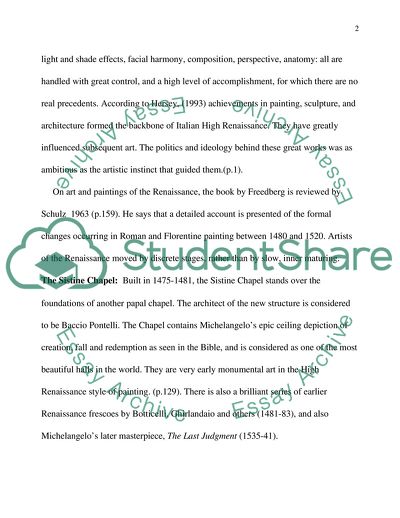Cite this document
(The High Renaissance in Italy Literature review Example | Topics and Well Written Essays - 1250 words, n.d.)
The High Renaissance in Italy Literature review Example | Topics and Well Written Essays - 1250 words. https://studentshare.org/visual-arts-film-studies/1705437-the-high-renaissance-in-italy
The High Renaissance in Italy Literature review Example | Topics and Well Written Essays - 1250 words. https://studentshare.org/visual-arts-film-studies/1705437-the-high-renaissance-in-italy
(The High Renaissance in Italy Literature Review Example | Topics and Well Written Essays - 1250 Words)
The High Renaissance in Italy Literature Review Example | Topics and Well Written Essays - 1250 Words. https://studentshare.org/visual-arts-film-studies/1705437-the-high-renaissance-in-italy.
The High Renaissance in Italy Literature Review Example | Topics and Well Written Essays - 1250 Words. https://studentshare.org/visual-arts-film-studies/1705437-the-high-renaissance-in-italy.
“The High Renaissance in Italy Literature Review Example | Topics and Well Written Essays - 1250 Words”. https://studentshare.org/visual-arts-film-studies/1705437-the-high-renaissance-in-italy.


